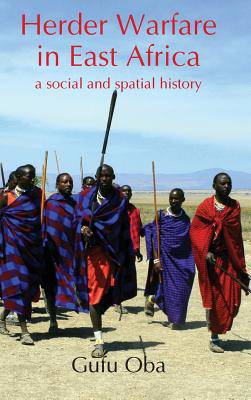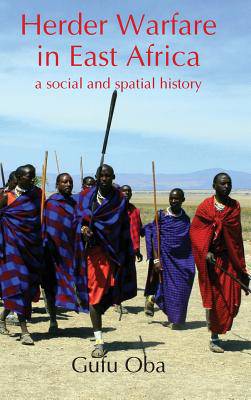
- Afhalen na 1 uur in een winkel met voorraad
- Gratis thuislevering in België vanaf € 30
- Ruim aanbod met 7 miljoen producten
- Afhalen na 1 uur in een winkel met voorraad
- Gratis thuislevering in België vanaf € 30
- Ruim aanbod met 7 miljoen producten
Omschrijving
Herder Warfare in East Africa presents a regional analysis of the spatial and social history of warfare among the nomadic peoples of East Africa, covering a period of 600 years. The long dureé facilitates understanding of how warfare among pastoralist communities in earlier centuries contributed to political, economic and ethnic shifts across the grazing lands in East Africa. The book discusses herder warfare from the perspective of warfare ecology, highlighting the interrelations between environmental and cultural causalities - including droughts, famine, floods, ritual wars, religious wars and migrations - and the processes and consequences of war. Regional synthesis concentrates on frontiers of conflicts extending from the White Nile Basin in south Sudan - into the southern savannas of East Africa, the Great East African Rift Valley, and the northern and southern Horn of Africa - examining historical military power shifts between diverse pastoralist cultures. Case studies are set in the coastal hinterland of East Africa and the Jubaland-Wajir frontiers. Warfare combined with environmental disasters caused social-economic breakdowns and the enslavement of defeated groups. The dynamics of herder warfare changed after colonial entry, response to pastoralist resistance and slave emancipation. The book is of interest to specialist and non-specialist readers exploring pastoralism, social anthropology and warfare and conflict studies; and is suitable for introductory graduate courses in environmental and social history of warfare .
Specificaties
Betrokkenen
- Auteur(s):
- Uitgeverij:
Inhoud
- Aantal bladzijden:
- 368
- Taal:
- Engels
Eigenschappen
- Productcode (EAN):
- 9781874267966
- Verschijningsdatum:
- 15/05/2017
- Uitvoering:
- Hardcover
- Formaat:
- Genaaid
- Afmetingen:
- 152 mm x 229 mm
- Gewicht:
- 707 g

Alleen bij Standaard Boekhandel
Beoordelingen
We publiceren alleen reviews die voldoen aan de voorwaarden voor reviews. Bekijk onze voorwaarden voor reviews.











